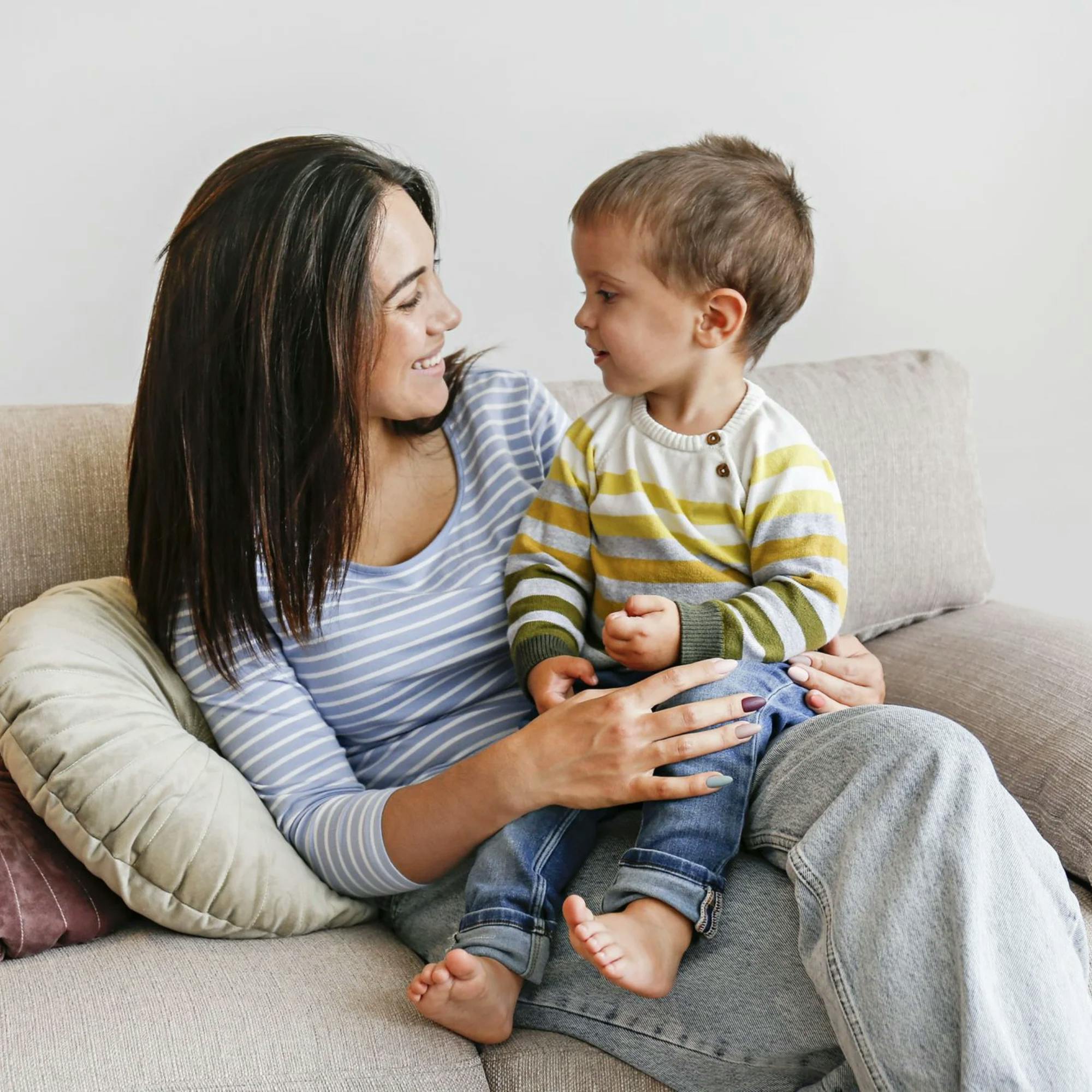The Communication Milestones That Come Before Speech
Today we’re going to talk about what we call language precursors–the important communication milestones that your child needs to reach before they begin to use words.
If your child is in speech therapy, depending on their age and abilities, they may not yet be working on verbal communication. And that’s OK! People often think about speech therapy as something that teaches children to talk. But there are many communication skills that need to be learned before your child says their first words. Let me explain.
The first 18 months of a child’s life are some of the most formative in terms of speech and language acquisition. This is a time when the brain is rapidly developing and maturing. It’s like a sponge, absorbing all the language around it.
While every child develops on their own timeline, the stages of early language development are near universal among humans. A baby’s cries soon turn into cooing and babbling, and their first words follow shortly after. These foundational language skills are essential. They support the more complex communication that allows children to clearly express their thoughts, feelings, and ideas as they get older. So if a child is missing milestones for those foundational skills, we need to focus on them before moving on to using words.
Let’s talk more about what these language precursors include. There are 4 main areas of speech and language development that begin to occur in infancy. Remember, these early communication skills lay the foundation for your child learning to talk.
First is response and attention. Babies begin to respond to light, sounds, and touch in their first few days of life. As they get older, they begin to respond to people. These back and forth exchanges–whether it’s eye contact, a smile, or responding to their name–are some of the first signs of communication! You should also see your baby begin to develop joint attention skills, where they learn to focus on the same thing as another person. Next come early interaction skills. These include vocalizations like coos and babbles. Early interaction also includes your baby learning to gesture and point, as well as to imitate your actions or sounds. An example would be when you change your tone of voice and your baby imitates you. And as your little one begins to learn to play with others, that’s strengthening their interaction skills as well. Then comes receptive language. This refers to the words that a child is able to understand. Babies and toddlers first have to learn what words mean before they can use them appropriately. You may notice signs of growing receptive language when you tell your baby it’s time to “eat,” and they quiet down. Or you say “bye-bye,” and they become sad or upset. Being able to follow directions is another sign of receptive language skills–for example, if you tell your child “Come here” and they do. Finally, we have expressive language. This is your child’s output of communication. Expressive language can be nonverbal, like using a facial expression, or verbal, such as using words.
It’s helpful to think of speech and language development like a staircase. When climbing stairs, we don’t reach the second story with a couple big jumps. We take one step at a time until we get to the top.
The same is true for your child. They have to climb up each “step” of development before they can become a strong verbal communicator. That’s why speech therapy may be focused on communication skills that don’t involve actual talking. Your child may be learning to gain your attention in order to get something, or they might be learning to imitate hand motions during a song. Your speech therapist is guiding your child up the staircase. And you can be a supportive and sturdy hand helping them climb the steps.






